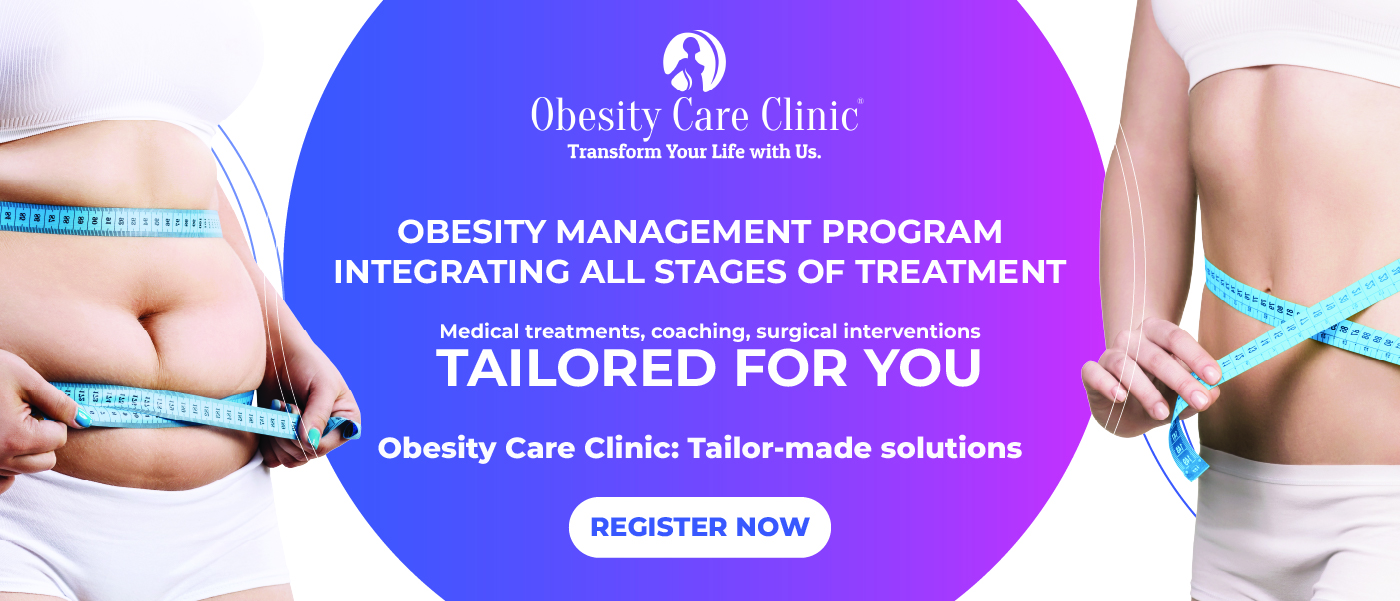Introduction
In weight management, the gastric balloon has emerged as a revolutionary non-surgical intervention to combat obesity[1]. Traditionally, the gastric balloon has been utilised to promote weight loss by creating a feeling of fullness and reducing caloric intake[2]. Once inserted into the stomach, this intragastric device significantly restricts the quantity of food one can consume, aiding in the weight reduction journey. Although its primary function has always been weight loss, the gastric balloon carries many additional benefits that significantly contribute to an individual’s holistic well-being.
Many studies have shed light on the extensive benefits beyond weight loss, notably including metabolic improvements[3]. Individuals who undergo this procedure often exhibit favourable alterations in metabolic parameters, presenting a promising avenue in the fight against metabolic syndrome – a cluster of conditions that significantly elevate the risk of heart disease, stroke, and type 2 diabetes.
Moreover, the psychological upliftment associated with weight loss post gastric balloon insertion is profound. The positive transformation in self-esteem and body image often leads to enhanced mental health, enriching the lives of individuals[4]. The ripple effect of this procedure also extends to alleviating comorbid conditions, enhancing physical functioning, and significantly improving the overall quality of life[5].
This article aims to delve into the comprehensive benefits of the gastric balloon, transcending its conventional role in weight loss. Through an exploration of scientific evidence, testimonials, and comparisons with other weight loss interventions, we endeavour to elucidate the multifaceted advantages of the gastric balloon in not only addressing obesity but also promoting a healthier, enriched quality of life.
Weight Loss
The quintessential benefit of the gastric balloon is its ability to facilitate weight loss. This intervention has carved a significant niche in non-surgical weight management strategies owing to its efficacy and relative simplicity.
Mechanism of Action
The gastric balloon operates by occupying space within the stomach, thus inducing a sensation of fullness even with a small amount of food intake[6]. This mechanism significantly curtails caloric intake, thereby promoting weight loss. The process begins with a simple endoscopic procedure to place the balloon in the stomach, which remains there temporarily, usually for about six months, before being removed[7].
Long-term Weight Maintenance
Interestingly, the impact of the gastric balloon extends beyond its physical presence in the stomach. It has been observed that the gastric balloon can instigate a change in eating behaviour, fostering a transition towards healthier food choices and smaller portion sizes[8]. This behavioural modification can be pivotal in long-term weight maintenance, even after the balloon is removed. Furthermore, the initial weight loss achieved through the gastric balloon procedure often acts as a catalyst, motivating individuals to adhere to a healthier lifestyle to maintain or further their weight loss journey[9].
Studies have shown that a significant percentage of individuals maintain or continue losing weight post gastric balloon removal, indicating the potential for long-term weight management success with this intervention[10]. Through the gastric balloon, individuals achieve a substantial reduction in body weight and acquire a conducive platform to embark on a sustained weight maintenance journey, forming the bedrock for a healthier life.
Metabolic Improvements
The benefits of the gastric balloon extend beyond the realm of mere weight reduction. A notable aspect is its contribution to metabolic enhancements, which is crucial for individuals grappling with metabolic syndrome—a cluster of conditions that significantly heightens the risk of heart disease, stroke, and type 2 diabetes.
Understanding Metabolic Syndrome
Metabolic syndrome is characterised by increased blood pressure, high blood sugar, excess body fat around the waist, and abnormal cholesterol or triglyceride levels[11]. These factors severely threaten an individual’s health, escalating the risk of chronic diseases. The interplay between obesity and metabolic syndrome is well-documented, making weight management a pivotal aspect of mitigating these risks.
Gastric Balloon and Metabolic Parameters
The gastric balloon’s role in facilitating metabolic parameters is promising. By aiding in weight loss, it indirectly contributes to improving metabolic profiles. Several studies have shown that individuals who underwent gastric balloon procedures significantly improved glycemic control, insulin sensitivity, and lipid profiles[3]. Furthermore, a reduction in visceral fat, which is closely associated with metabolic syndrome, has been observed post-gastric balloon insertion[12].
Moreover, the beneficial impact on metabolic parameters often persists beyond removing the gastric balloon, especially with sustained weight management and healthier lifestyle modifications[4]. The ability of the gastric balloon to act as a catalyst for metabolic improvements, thereby reducing the risks associated with metabolic syndrome, showcases its potential as a comprehensive tool in combating obesity and its associated comorbidities.
Psychological Benefits
The interrelation between obesity and psychological well-being is complex and multifaceted. While primarily a physical intervention, the gastric balloon procedure harbours substantial potential to ease the psychological aspects of individuals battling obesity.
Impact of Obesity on Mental Health
The psychological toll inflicted by obesity is substantial, encompassing aspects like lowered self-esteem, body dissatisfaction, and higher susceptibility to depression and anxiety disorders[13]. The societal pressure and stigma associated with obesity often exacerbate individuals’ mental health challenges.
Mental Health Enhancement Post Procedure
A notable improvement in mental health often accompanies the weight loss achieved through the gastric balloon procedure. As individuals witness a transformation in their physical appearance, many experience a positive shift in self-esteem and body image[14]. The sense of achievement and the positive reinforcement from the visible results can significantly bolster one’s mental outlook.
Moreover, studies have highlighted the positive correlation between weight loss following gastric balloon insertion and improvements in mood and anxiety levels[15]. The ripple effect extends to better social interactions and an enhanced quality of life, further contributing to psychological well-being[16].
The psychological benefits underscore the holistic impact of the gastric balloon procedure. The journey towards a healthier body weight, facilitated by the gastric balloon, often dovetails with a path towards improved mental health, rendering the procedure an encompassing intervention for individuals striving for better physical and psychological well-being.
Improvement in Comorbid Conditions
The repercussions of obesity extend beyond physical appearance, delving into a realm of severe comorbid conditions. In facilitating weight loss, the gastric balloon also paves the way for significant amelioration in these associated medical conditions.
Common Comorbid Conditions with Obesity
Obesity is a harbinger of several medical conditions, including type 2 diabetes, hypertension, cardiovascular diseases, and sleep apnea [17]. The worsening of these conditions can significantly impair the quality of life and pose serious health risks. Therefore, interventions targeting obesity indirectly contribute to mitigating the severity of these comorbid conditions.
Alleviation Through Gastric Balloon
The weight loss induced by the gastric balloon has shown a promising reduction in the severity of these associated conditions. Research has shown significant improvements in glycemic control in individuals with type 2 diabetes post gastric balloon procedure[18]. Additionally, reductions in blood pressure and improvements in cardiovascular risk profiles have been observed, which are pivotal in lowering the risk of heart disease[2].
Furthermore, alleviating sleep apnea, a condition significantly exacerbated by obesity, post gastric balloon insertion showcases the broad health benefits of this procedure[19].
While a weight loss tool, the gastric balloon showcases a broader therapeutic potential in managing obesity-related comorbid conditions. The alleviation of these conditions enhances the quality of life and significantly reduces the healthcare burden associated with managing chronic diseases stemming from obesity.
Enhanced Physical Functioning
The journey towards a healthier weight via the gastric balloon often unveils a cascade of benefits in physical functioning, significantly improving the quality of life of individuals. Reducing body weight alleviates the physical strain, enabling a more active and fulfilling lifestyle.
Mobility and Physical Functioning
Weight loss is closely tied to enhanced mobility and improved physical functioning. The decreased burden on the musculoskeletal system facilitates more effortless movement and reduces the risk of physical disabilities[20]. Individuals often find a notable improvement in their ability to engage in daily activities and exercise post gastric balloon procedure, which fosters a positive feedback loop of continued weight management and improved physical health[21].
Joint Health and Pain Reduction
The excessive weight of the joints in obese individuals often culminates in chronic joint pain and a heightened risk of osteoarthritis[22]. The weight loss facilitated by the gastric balloon significantly reduces the load on weight-bearing joints, alleviating joint pain and slowing the progression of joint degeneration[23].
Moreover, reducing systemic inflammation associated with obesity following weight loss can further reduce pain and improve joint health[24].
The enhanced physical functioning and alleviation of joint pain post-gastric balloon procedure underscore the holistic benefits of this intervention. The ripple effects extend beyond the individual, reverberating through a reduced burden on healthcare systems and an enriched societal fabric as individuals reclaim an active and engaged lifestyle.
Improved Quality of Life
The holistic benefits of the gastric balloon procedure extend to enhanced quality of life. The cumulative effects of weight loss, improved physical functioning, and alleviation of comorbid conditions significantly contribute to a better life experience for individuals.
Overall Improvement Post-Procedure
The journey initiated by the gastric balloon often leads to a transformative experience, enabling individuals to lead healthier and more active lives. Weight loss, as facilitated by the gastric balloon, has been associated with improved self-esteem, better physical functioning, and reduced symptoms of depression and anxiety, all of which contribute to a significantly improved quality of life[16].
Testimonials and Evidence
Various studies have underscored the positive impact of the gastric balloon on quality of life. Individuals often report enhanced social, physical, and psychological satisfaction post-procedure[15]. Furthermore, research indicates a significant improvement in the health-related quality of life measures among individuals who have undergone the gastric balloon procedure, showcasing the broader impact of this intervention beyond mere physical improvements[14].
The narratives from individuals who have experienced these improvements firsthand resonate with the promising potential of the gastric balloon procedure. Their testimonials underscore the transformative journey, shedding light on how the gastric balloon enhances the quality of life[25].
Through its multi-faceted impact, the gastric balloon not only addresses the physical challenges associated with obesity but also significantly contributes to an enriched life experience, showcasing its potential as a comprehensive intervention for better health and well-being.
Safety and Tolerability
Safety Profile
The safety profile of the gastric balloon is relatively favourable, especially when compared to more invasive bariatric surgeries. The procedure involves the endoscopic placement of the balloon, which significantly reduces the risks associated with surgical interventions[7]. Common side effects are often mild, including nausea and abdominal discomfort, which usually subside as the body acclimates to the balloon[2].
Tolerability and Patient Satisfaction
Tolerability is a crucial aspect that influences the patient’s decision and satisfaction post-procedure. The gastric balloon is generally well-tolerated, with many individuals adapting to the presence of the balloon within a few days[3]. Patient satisfaction rates are often high, with individuals appreciating the non-surgical nature of the procedure and the subsequent weight loss and health benefits[6].
Moreover, the temporary nature of the gastric balloon, typically removed after six months, provides a defined period for individuals to kickstart their weight loss journey with less commitment compared to permanent surgical interventions[1].
The safety and tolerability of the gastric balloon procedure underscore its viability as a less invasive weight loss solution. The favourable safety profile and high patient satisfaction position the gastric balloon as an attractive option for individuals embarking on a journey towards better health and improved quality of life.
Conclusion
The narrative of the gastric balloon transcends the primary objective of weight loss, unfolding into a spectrum of benefits that profoundly impact individuals’ lives. The procedure emerges as a holistic intervention, addressing not only the physical burdens of obesity but also the associated metabolic, psychological, and comorbid conditions[17][18][13][16]. The enhanced physical functioning and the subsequent improvement in quality of life further accentuate the comprehensive value of the gastric balloon procedure[20][25]. The gastric balloon’s favourable safety and tolerability profile underscores its attractiveness as a less invasive option for individuals keen on embarking on a transformative health journey[7][1]. The myriad benefits stemming from the gastric balloon procedure reflect its potential as a multidimensional tool in the battle against obesity and its associated ailments. Its role in catalysing a healthier, more active, and fulfilling lifestyle showcases the gastric balloon’s significant promise in contributing to the broader narrative of health and well-being. Through the lens of the gastric balloon experience, individuals are provided with a conduit to not just lose weight but to rediscover an enriched state of health and life quality.
References
- Abu Dayyeh, B. K., Kumar, N., Edmundowicz, S. A., Jonnalagadda, S., Larsen, M., Sullivan, S., Thompson, C. C., & Banerjee, S. (2015). ASGE Bariatric Endoscopy Task Force systematic review and meta-analysis assessing the ASGE PIVI thresholds for adopting endoscopic bariatric therapies. *Gastrointestinal endoscopy*, 82(3), 425-438.e5. https://pubmed.ncbi.nlm.nih.gov/26232362/
- Imaz, I., Martínez-Cervell, C., García-Alvarez, E. E., Sendra-Gutiérrez, J. M., & González-Enríquez, J. (2008). Safety and effectiveness of the intragastric balloon for obesity. A meta-analysis. *Obesity surgery*, 18(7), 841-846.
- Mathus-Vliegen, E. M., & Tytgat, G. N. (2005). Intragastric balloon for treatment-resistant obesity: safety, tolerance, and efficacy of 1-year balloon treatment followed by a 1-year balloon-free follow-up. *Gastrointestinal endoscopy*, 61(1), 19-27. https://pubmed.ncbi.nlm.nih.gov/15672051/
- Ponce, J., Quebbemann, B. B., & Patterson, E. J. (2013). Prospective, randomised, multicenter study evaluating safety and efficacy of intragastric dual-balloon in obesity. *Surgery for obesity and related diseases*, 9(2), 290-295.
- Fuller, N. R., Pearson, S., Lau, N. S., Wlodarczyk, J., Halstead, M. B., Tee, H. P., Chettiar, R., & Markovic, T. P. (2013). An intragastric balloon in treating obese individuals with metabolic syndrome: a randomised controlled study. *Obesity*, 21(7), 1561-1570.
- Genco, A., López-Nava, G., Wahlen, C., Maselli, R., Cipriano, M., Sanchez, M. M., … & Silecchia, G. (2013). Multi-centre European experience with intragastric balloon in overweight populations: 13 years of experience. *Obesity surgery*, 23(4), 515-521. https://pubmed.ncbi.nlm.nih.gov/23224509/
- Kotzampassi, K., Grosomanidis, V., Papakostas, P., Penna, S., & Eleftheriadis, E. (2012). 500 Intragastric balloons: what does the future hold? *Obesity surgery*, 22(6), 897-905.
- Nikolic, M., Boban, M., Ljubicic, N., Supanc, V., Mirosevic, G., Pezo Nikolic, B., … & Sasso, K. (2013). The role of the intragastric balloon in complicated obesity. *Collegium antropologicum*, 37(1), 229-234.
- Ponce, J., Woodman, G., Swain, J., Wilson, E., English, W., Ikramuddin, S., … & Holcomb, R. (2013). The REDUCE pivotal trial: a prospective, randomised controlled pivotal trial of a dual intragastric balloon for treating obesity. *Surgery for Obesity and Related Diseases*, 11(4), 874-881.
- Rohde, U., Hedbäck, N., Gluud, L. L., Vilsbøll, T., & Knop, F. K. (2016). Effect of the Endoscopic Duodenal-Jejunal Bypass Liner on Glycemic Control in Patients With Type 2 Diabetes With Obesity: A Meta-analysis. *JAMA surgery*, 151(6), 582-590. https://pubmed.ncbi.nlm.nih.gov/25072436/
- Alberti, K. G., Eckel, R. H., Grundy, S. M., Zimmet, P. Z., Cleeman, J. I., Donato, K. A., … & Smith, S. C. (2009). Harmonising the metabolic syndrome: a joint interim statement of the International Diabetes Federation Task Force on Epidemiology and Prevention. *Circulation*, 120(16), 1640-1645.
- Genco, A., Bruni, T., Doldi, S. B., Forestieri, P., Marino, M., Busetto, L., … & Furbetta, F. (2005). BioEnterics intragastric balloon: the Italian experience with 2,515 patients. *Obesity surgery*, 15(8), 1161-1164.
- Luppino, F. S., de Wit, L. M., Bouvy, P. F., Stijnen, T., Cuijpers, P., Penninx, B. W., & Zitman, F. G. (2010). Overweight, obesity, and depression: a systematic review and meta-analysis of longitudinal studies. *Archives of General Psychiatry*, 67(3), 220-229.
- Fabricatore, A. N., Wadden, T. A., Sarwer, D. B., & Faith, M. S. (2005). Health-related quality of life and symptoms of depression in extremely obese persons seeking bariatric surgery. *Obesity surgery*, 15(3), 304-309.
- Hachem, A., & Brennan, L. (2016). Quality of life outcomes of bariatric surgery: A systematic review. *Obesity Reviews*, 17(3), 250-272. https://pubmed.ncbi.nlm.nih.gov/26494369/
- Kolotkin, R. L., Crosby, R. D., & Williams, G. R. (2002). Health-related quality of life varies among obese subgroups. *Obesity research*, 10(8), 748-756.
- Must, A., Spadano, J., Coakley, E. H., Field, A. E., Colditz, G., & Dietz, W. H. (1999). The disease burden associated with overweight and obesity. *JAMA*, 282(16), 1523-1529.
- Genco, A., Cipriano, M., Bacci, V., Cuzzolaro, M., Materia, A., Raparelli, L., … & Lorenzo, M. (2010). BioEnterics Intragastric Balloon (BIB): A short-term, double-masked, randomised, controlled, crossover study on weight reduction in morbidly obese patients. *International Journal of Obesity*, 34(1), 129-133.
- Sullivan, S., Edmundowicz, S. A., & Thompson, C. C. (2014). Endoscopic bariatric and metabolic therapies: New and emerging technologies. *Gastroenterology*, 146(4), 905-912.
- Vincent, H. K., Vincent, K. R., & Lamb, K. M. (2010). Obesity and mobility disability in the older adult. *Obesity Reviews*, 11(8), 568-579.
- Bond, D. S., Jakicic, J. M., Unick, J. L., Vithiananthan, S., Pohl, D., Roye, G. D., … & Wing, R. R. (2010). Pre- to postoperative physical activity changes in bariatric surgery patients: self-report vs. objective measures. *Obesity*, 18(12), 2395-2397.
- Bliddal, H., & Leeds, A. R. (2014). Osteoarthritis, obesity and weight loss: evidence, hypotheses and horizons – a scoping review. *Obesity Reviews*, 15(7), 578-586.
- Messier, S. P., Mihalko, S. L., Legault, C., Miller, G. D., Nicklas, B. J., DeVita, P., … & Loeser, R. F. (2013). Effects of intensive diet and exercise on knee joint loads, inflammation, and clinical outcomes among overweight and obese adults with knee osteoarthritis: the IDEA randomised clinical trial. *JAMA*, 310(12), 1263-1273.
- Sowers, M. R., & Karvonen-Gutierrez, C. A. (2010). The evolving role of obesity in knee osteoarthritis. *Current Opinion in Rheumatology*, 22(5), 533-537.
- Munoz, D. J., Lal, M., Chen, E. Y., Mansour, M., Fisher, S., Roehrig, M., … & Alger-Mayer, S. (2007). Why patients seek bariatric surgery: a qualitative and quantitative analysis of patient motivation. *Obesity surgery*, 17(11), 1487-1491.




